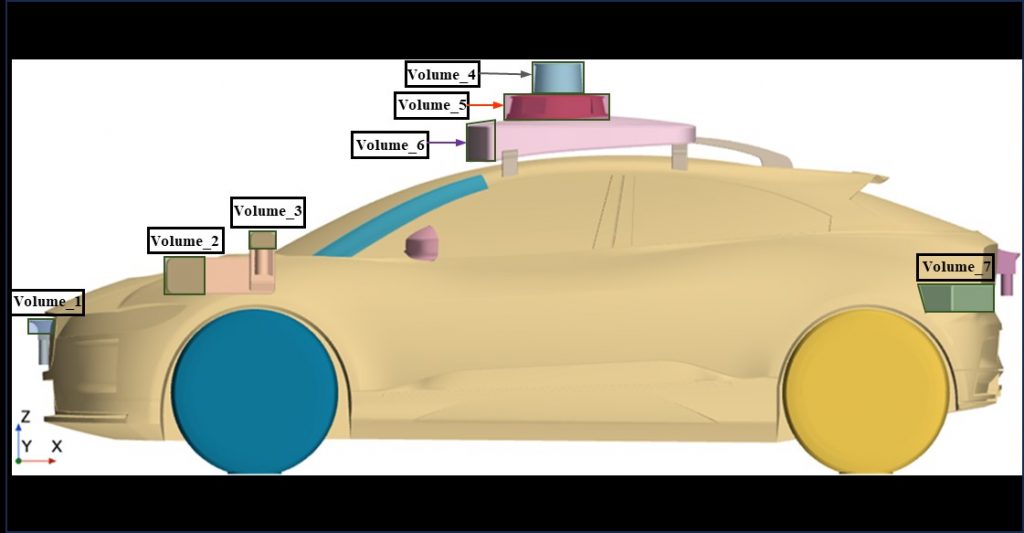Reducing aerodynamic drag caused by externally mounted sensors
From the Journal: Physics of Fluids

WASHINGTON, Jan. 7, 2025 – Thanks to the rapid progress of information technology and artificial intelligence, autonomous vehicles (AVs) have been taking off. In fact, AV technology is now advanced enough that the vehicles are being used for logistics delivery and low-speed public transportation.
While most research has focused on control algorithms to heighten safety, less attention has been directed at improving aerodynamic performance, which is essential for lowering energy consumption and extending driving range. As a result, aerodynamic drag issues have been preventing self-driving vehicles from keeping pace with regular vehicle acceleration.
In Physics of Fluids, from AIP Publishing, researchers from Wuhan University of Technology in Wuhan, China, focused on enhancing the aerodynamic performance of AVs by reducing drag induced by externally mounted sensors such as cameras and light detection and ranging (LiDAR) instruments, which are necessary for AV functionality.
“Externally mounted sensors significantly increase aerodynamic drag, particularly by increasing the proportion of interference drag within the total aerodynamic drag,” said author Yiping Wang. “Considering these factors — the interactions among sensors and the impact of geometric dimensions on interference drag — it is essential to perform a comprehensive optimization of the sensors during the design phase.”
The researchers used a combination of computational and experimental methods. After establishing an automated computational platform, they combined the experimental design with a substitute model and an optimization algorithm to improve the structural shapes of AV sensors. Finally, they performed simulations of both the baseline and optimized models, analyzing the effects of drag reduction and examining the improvements in the aerodynamic performance of the optimized model. They used a wind tunnel experiment to validate the reliability of their findings.
After optimizing the design, researchers found a 3.44% decrease in the total aerodynamic drag of an AV. Compared with the baseline model, the optimized model reduced the aerodynamic drag coefficient by 5.99% in simulations and significantly improved aerodynamic performance in unsteady simulations.
The team also observed improvements in airflow, with less turbulence around the sensors and better pressure distribution at the back of the vehicle.
“Looking ahead, our findings could inform the design of more aerodynamically efficient autonomous vehicles, enabling them to travel longer distances,” said Wang. “This is especially important as the adoption of autonomous vehicles increases, not only in passenger transport but also in delivery and logistics applications.”
###
Article Title
Authors
Jian Zhao, Chuqi Su, Xun Liu, Junyan Wang, Dongxu Tang, and Yiping Wang
Author Affiliations
Wuhan University of Technology
